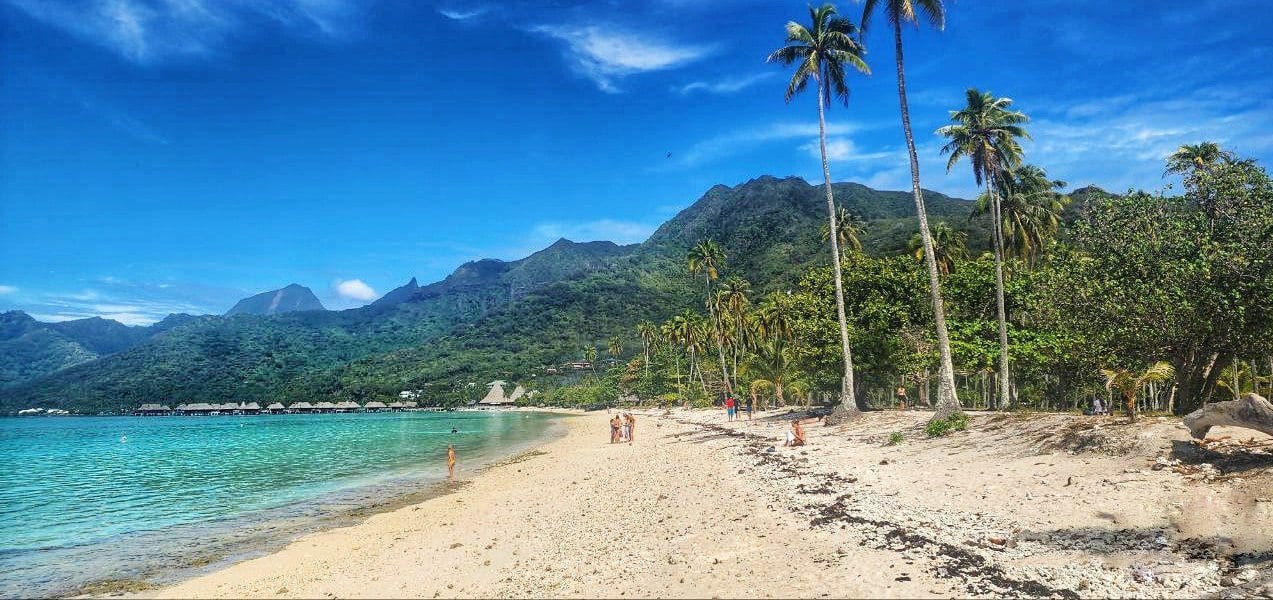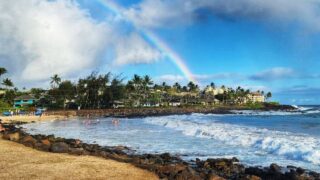Hawaii travel is getting more expensive, and visitors are noticing. Airfare sticker shock, nearly twenty percent accommodation taxes, parking charges, and resort fees all keep pushing the price of a vacation higher. Meanwhile, rival destinations are gaining momentum. Cancun just posted its first year-over-year growth after more than a year of decline, and Tahiti is set to add daily Dreamliner flights from San Francisco.
The contrast could not be clearer. Hawaii saw both arrivals and spending slip in July, even as its competitors expand access and generate buzz. The question now is whether Hawaii, intentionally or not, is losing ground in the race for travelers choosing their next island escape.
Destination management vs growth.
The Hawaii Tourism Authority has been shifting its focus from chasing larger visitor numbers to what it calls destination management. That shift was evident at a recent Kauai meeting, where residents filled discussion boards with sticky notes calling for safer trails, clean restrooms, well-maintained public spaces, and reduced crowding at popular sites. People acknowledged the value of tourism, but they also said the impact on daily life is no longer being effectively managed.
It is a crucial moment. Hawaii can point to nearly two billion dollars in July visitor spending, yet residents and visitors alike say they still see broken bathrooms, dangerous sidewalks, and clogged roads. That disconnect fuels the same friction that visitors experience. If the focus truly shifts toward managing the experience for both residents and travelers, Hawaii may find a way to keep its edge even as other beach destination rivals grow.
Is the problem one of visitor fatigue and friction?
Mainland visitors once absorbed higher costs without much pushback. Today, more are asking if the value is still there. Parking charges, resort fees, nearly 20 percent accommodation taxes, timed entry for beaches and parks, and airfare sticker shock now combine to make a Hawaii trip feel like a series of extra steps. For many, that erodes the sense of escape and ease that the islands once promised. July’s data, with both arrivals and spending sliding together, suggests this fatigue may finally be showing up in the bottom line.
Cancun turns the corner and rivals Hawaii in visitor numbers.
Cancun’s airport handled more passengers in July than the year before, ending a sixteen-month slide. That matters because Cancun pulls from the very same U.S. and Canadian markets that Hawaii depends on. Families, retirees, groups of friends, and others fill those planes. In other words, Cancun is not some distant competitor. It is chasing the same visitors as Hawaii.
For many travelers, Cancun feels almost like a domestic trip. From the East Coast, flight times are less than half of what it takes to reach Honolulu. From the Midwest and South, it is a two- to three-hour hop rather than a longer-haul commitment. That kind of convenience changes everything. It means more frequent trips, easier decisions, and the ability to book on a whim. Hawaii cannot match that advantage, which makes the comparison even more uncomfortable when arrivals here are slipping.
Costs in Cancun are rising, too.
For years, U.S. and Canadian travelers counted on Cancun being cheaper than Hawaii. That gap has narrowed. The peso has strengthened from about twenty pesos to the dollar to closer to eighteen, cutting roughly a hundred dollars of buying power for every thousand exchanged.
Resorts have raised rates, inflation is pushing up food and service costs, and the state of Quintana Roo (where Cancun is located) now charges a mandatory albeit minimal visitor tax on top of it. Travelers are finding that Cancun no longer delivers the easy bargains it once did.
Yet compared with Hawaii, the perception is different. Hawaii’s prices are also up, but they come with a maze of add-ons like we mentioned. Cancun’s all-inclusive model means one price often covers almost everything. Even if the final bill in dollars feels closer to Hawaii’s, Cancun still wins points for predictability and mostly lower costs.
Tahiti’s momentum includes more flights by United Airlines.
Tahiti is small in scale, but its trajectory is unmistakable. United Airlines will operate its San Francisco to Papeete route daily next summer, up from five times a week, with Dreamliner widebodies that feature Polaris business class. That is a level of premium lift most United flights to Hawaii do not see. Add in French Bee, Air Tahiti Nui, and Air France from Los Angeles, and Tahiti now has more reach to the U.S. than ever before.
The point is not that Tahiti will ever even approach rivalling Hawaii’s numbers. It is that Tahiti is visibly adding access and momentum at a time when Hawaii is still waiting for its Japanese and Canadian markets to return. Direction matters, and Tahiti’s arrow is pointing up.
The Cook Islands’ rise.
The Cook Islands are also pushing forward. New flights from Sydney and Brisbane are drawing Australian visitors together with New Zealand visitors in record numbers. Rarotonga and Aitutaki will also never match Hawaii in volume, and they don’t want to. Their pitch is intimacy, authenticity, and a pace that reminds many of Hawaii decades ago. As we prepare to contrast and report from these islands firsthand this month, one point is clear. Hawaii visitors are testing alternatives.
Hawaii’s competitive gap.
Hawaii cannot move itself any closer to the East Coast or shorten the flights. What it can control is the experience once people land. Cancun is no longer the bargain it once was and Tahiti has never been cheap. What those destinations have right now is a renewed momentum and a sense of ease.
Hawaii, by contrast, risks losing ground when the trip feels complicated and overpriced. Visitors will still pay for quality, but not when every part of the vacation feels like an extra charge or a new hoop to jump through. When travelers compare Hawaii’s stack of fees and reservations to Cancun’s one-price wristband or Tahiti’s expanding flights and even low-cost options, Hawaii too often comes off as an increasingly more challenging choice.
What Hawaii can do.
The quickest fix is honesty. Visitors know Hawaii is expensive, but what frustrates them is discovering the travel hoops after they arrive. Making costs and access clearer up front would go a long way toward restoring trust.
The islands also need visible reinvestment. If restrooms are broken, trails are unsafe, sidewalks are non-existent, and paid scenic stops are run down, no one cares that spending totals are up. Demonstrating that rising costs are reflected in more cultural programs, natural resources, and basic visitor facilities would send the right signal.
Most of all, Hawaii has to double down on what sets it apart. A culture that is real, extraordinary nature, and a sense of welcome that visitors cannot find elsewhere. Price alone will never win against Cancun or Tahiti. Value, authenticity, and ease might.
The road ahead.
Analysts do not expect Hawaii to regain its 2019 arrival base until 2028. That means three more years of slow progress while rivals expand and attract attention. Cancun’s July rebound, Tahiti’s daily Dreamliner, and the Cook Islands’ new Australian lift all highlight a world that is not waiting for Hawaii to catch up.
The islands still hold an unmatched place in the imagination of travelers. However, if the experience continues to feel like a string of costs instead of an invitation, more visitors will choose somewhere else. The choice for Hawaii is whether to keep relying on brand power or to adapt to a competitive environment where rivals are proving more nimble.
Can Hawaii regain its edge, or will Cancun, Tahiti, and the Cook Islands capture the travelers Hawaii is losing? How do you weigh cost, simplicity, and experience when choosing your island getaway?
Photo Credit: Beat of Hawaii on Temae Beach, Island of Moorea in French Polynesia, 2024.
Get Breaking Hawaii Travel News







As a frequent visitor from California to Hawaii over the past 30 years who also has ties there, I would say that it’s true that we don’t feel as welcomed anymore. This sentiment holds amongst many of my friends and family as well. This year, I will be going to Tahiti for the first time, and considering Puerto Vallarta for the next. Instead of 2-3 times a year, I likely will visit Hawaii only once a year. It is still my “happy place”, but not the same as it once was. It’s more than just the cost of travel, but more the sense that you’re not wanted. Perhaps this is the intention, but it affects all visitors to Hawaii. So if the desire is to seek more “high end” visitors, this strategy may backfire, as many, regardless of their means, will look to go elsewhere where they feel more welcomed.
One might want to look closely at some other resorts and the travel advisories that are out there regarding safety. I would expect Beat of Hawaii is doing the same.